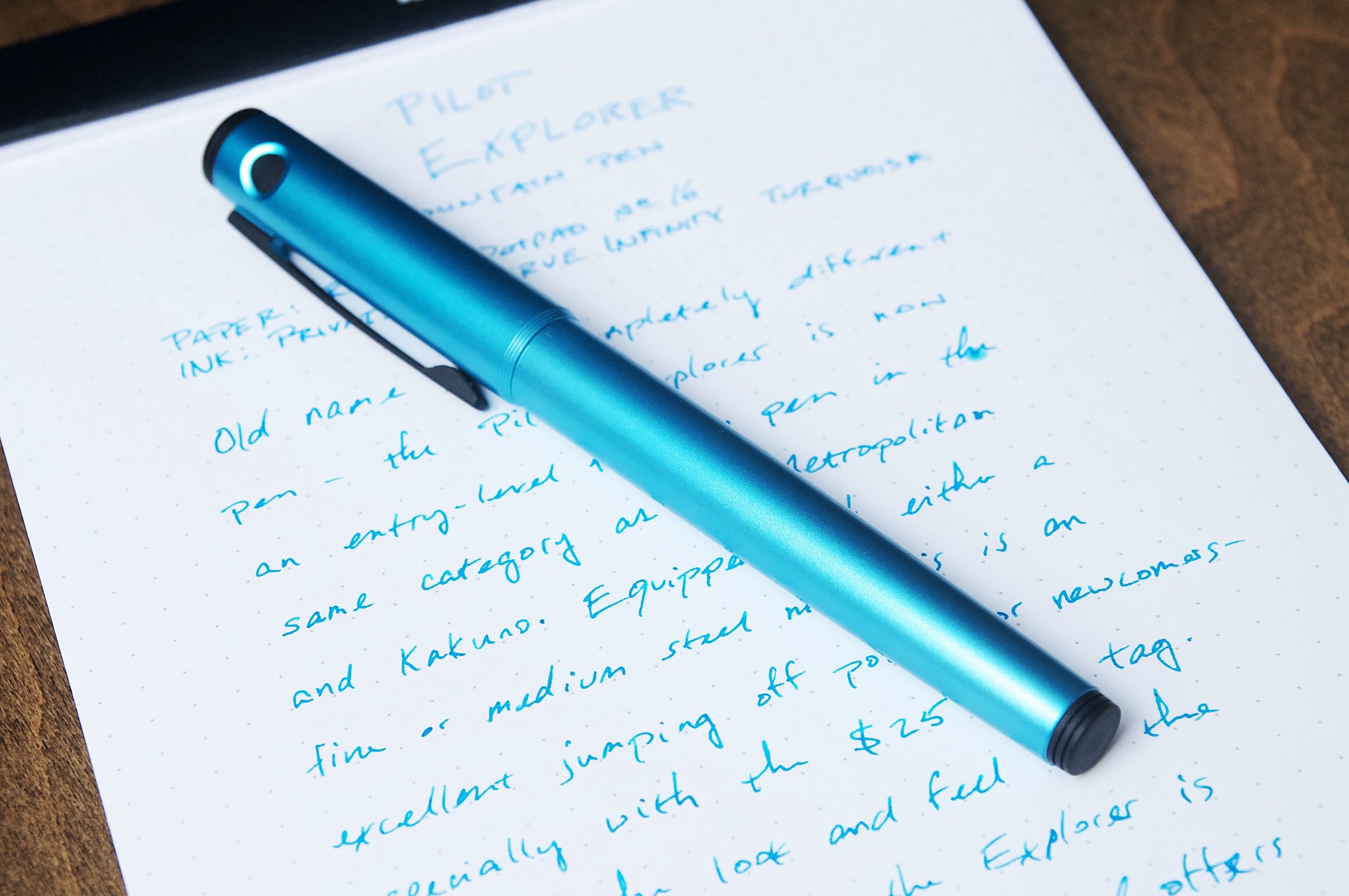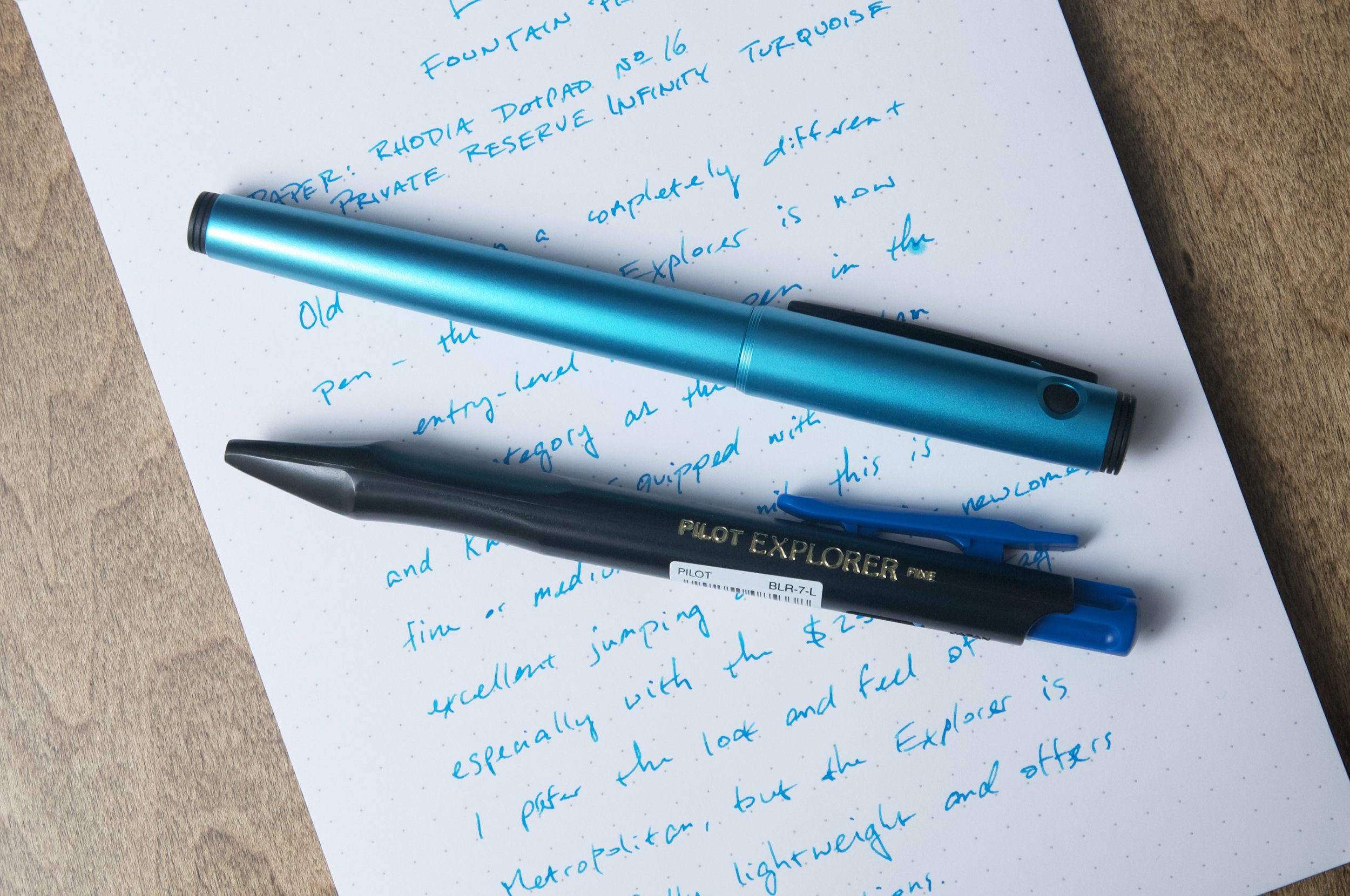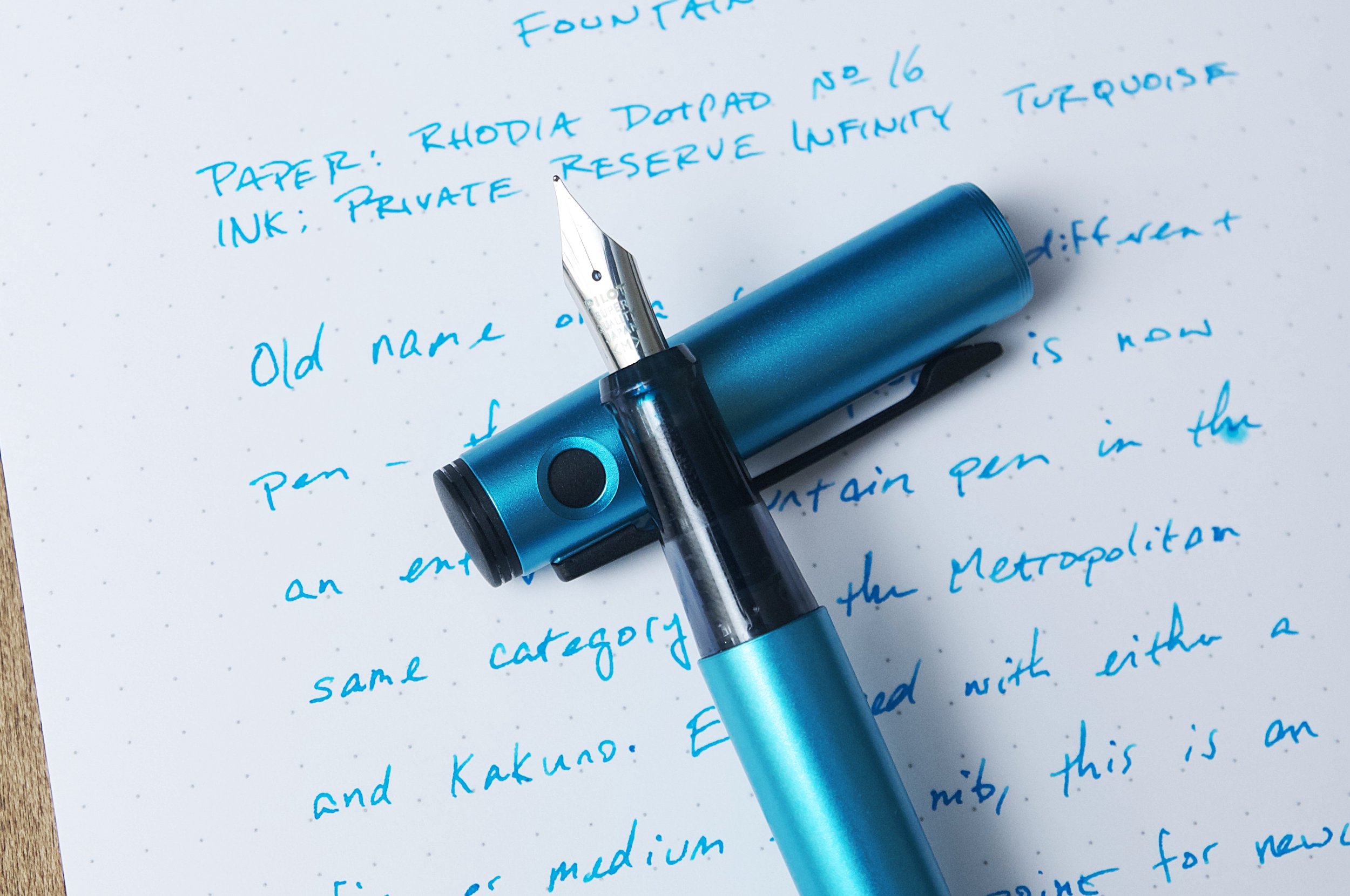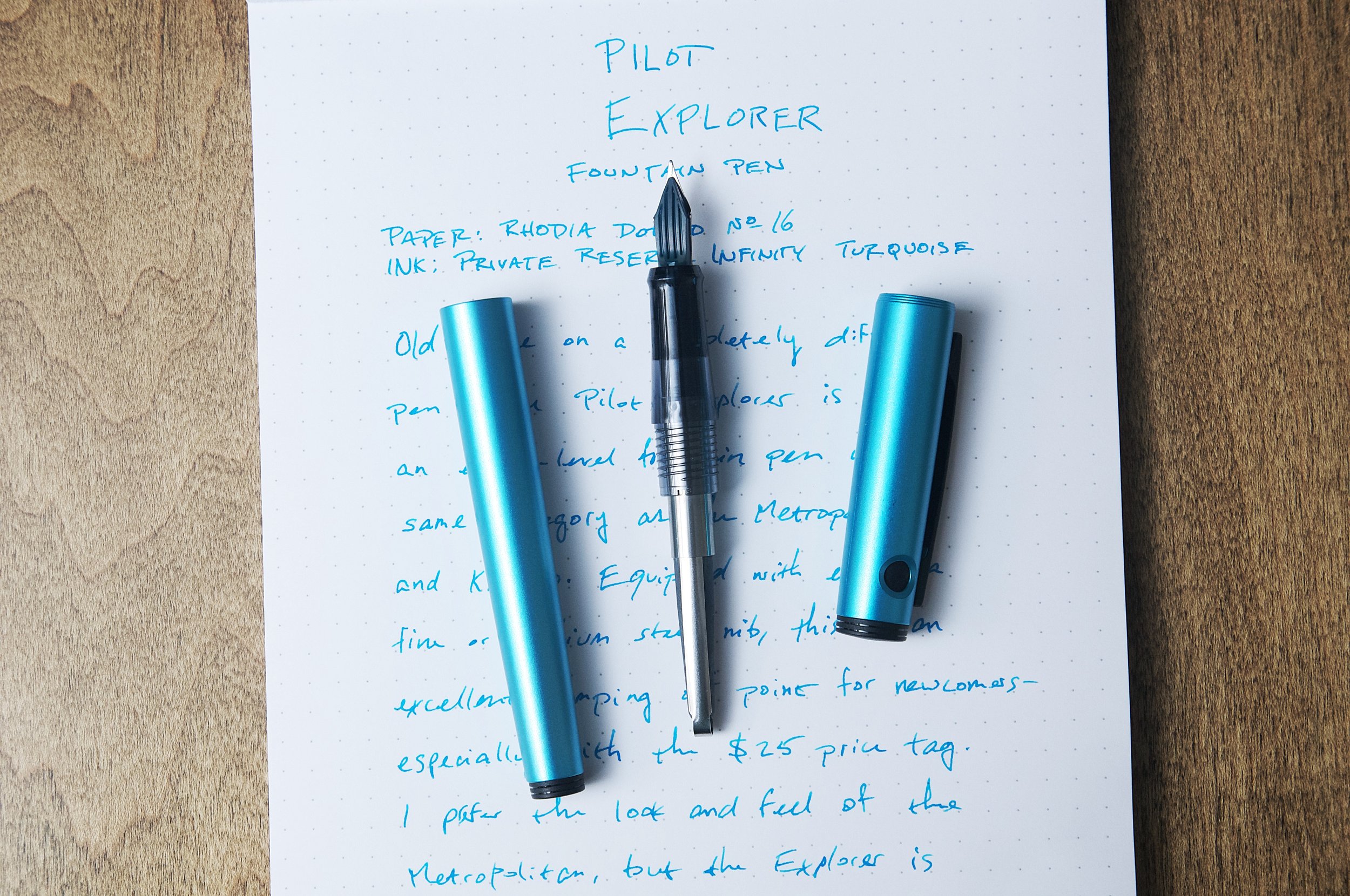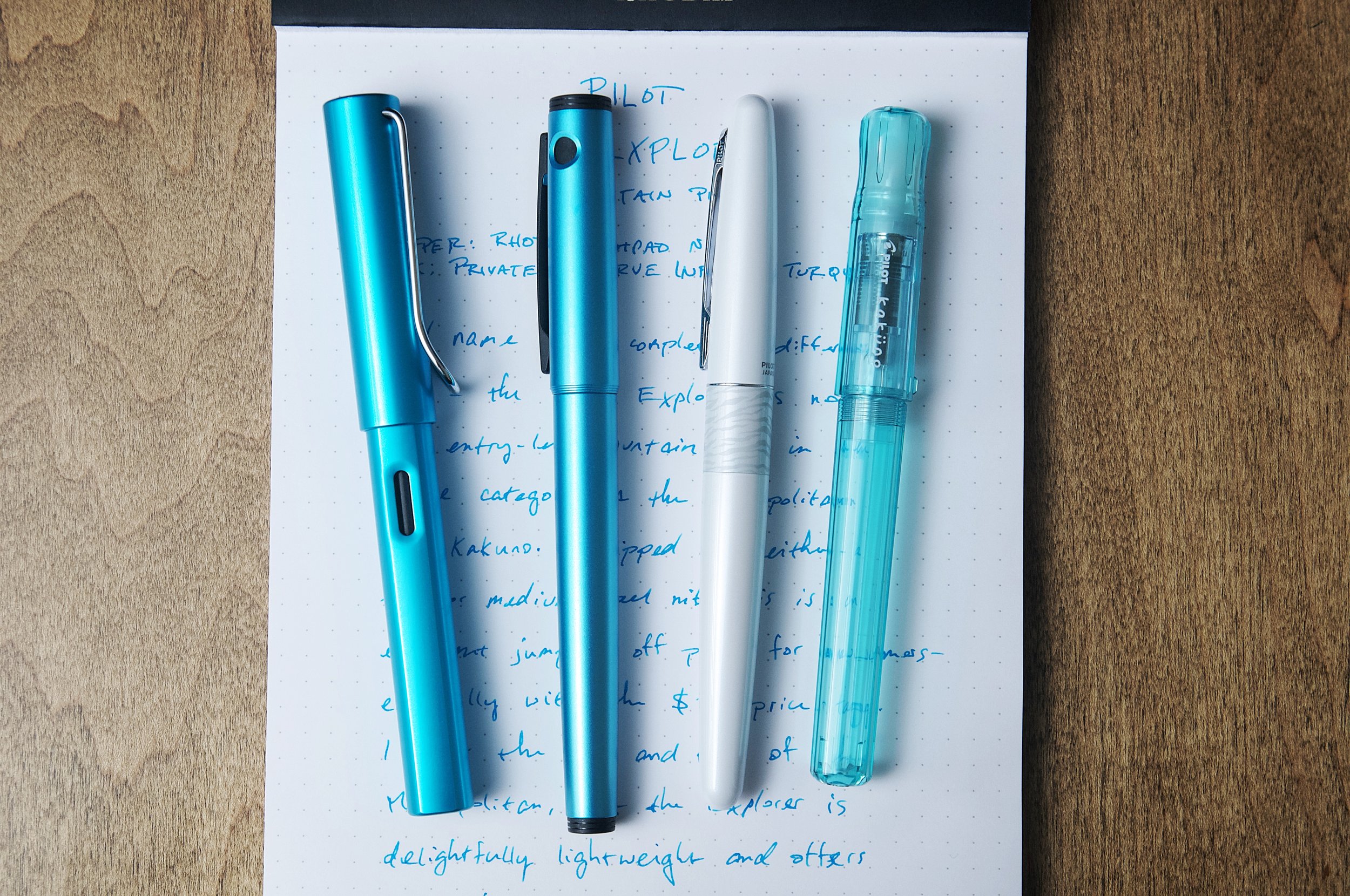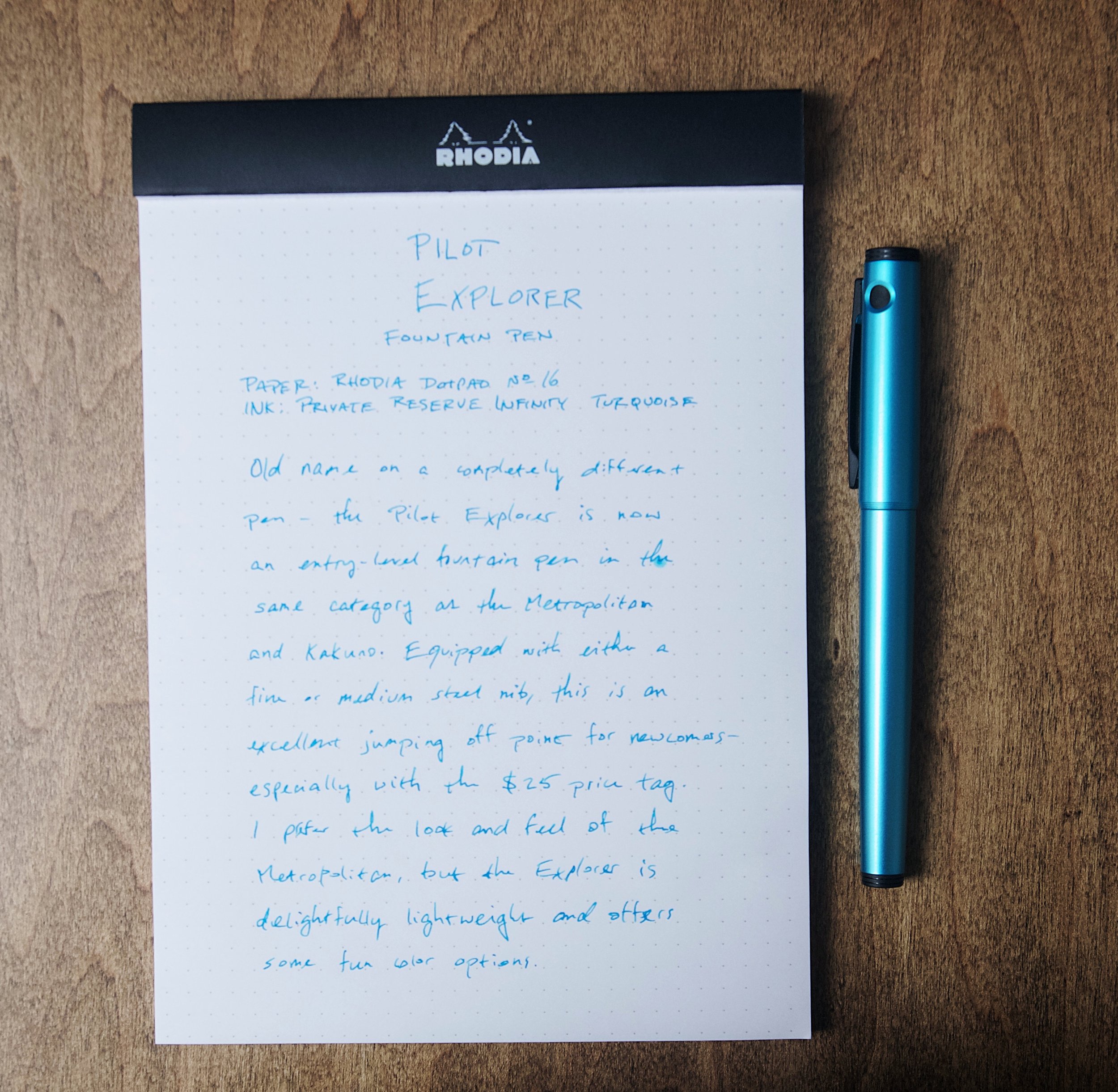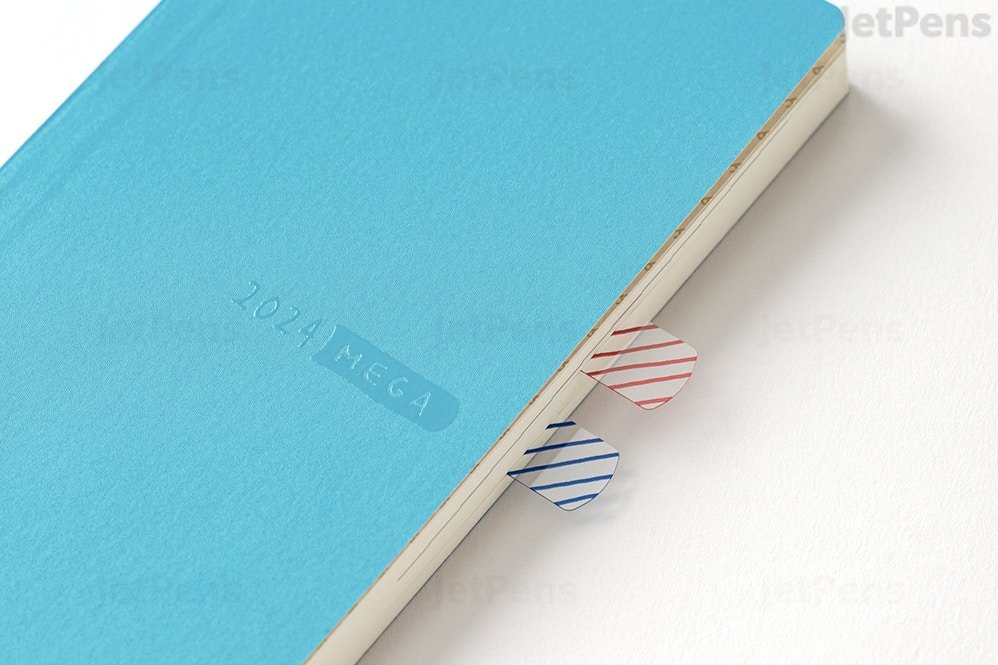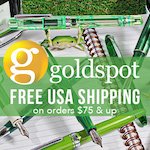(Jeff Abbott is a regular contributor at The Pen Addict. You can find more from Jeff online at Draft Evolution and Twitter.)
The Pilot Explorer fountain pen may have been around for close to five years now, but it still feels like a new release from Pilot. And even though it's been on the market for years now, I still automatically think of the OG Explorer when someone mentions "Pilot Explorer." In my mind, there's still only one Pilot Explorer, and it's a quirky, discontinued rollerball pen that is really hard to find nowadays. Because of this block in my brain, I compulsively refer to the fountain pen version as the "Pilot Explorer fountain pen" because my brain won't let me use the old name. If this is the kind of thing I have to look forward to as I continue becoming Old™, I guess bring it on? Or maybe be a little more creative with naming things? Either way, we're here to look at a fountain pen, and I'll leave my name judgments behind with this paragraph.
Kimberly actually looked at a similar variant of this pen back in March, so be sure to check that out for the demonstrator barrel and fine nib! The one I have the pleasure of using is from Vanness and it's the Turquoise colorway with a medium steel nib. I try to branch out from my preferences for turquoise and purple, but I also have a hard time saying no when turquoise or purple happen to be the only "interesting" color option for a product. That's what happened with the Explorer fountain pen, and I couldn't be happier with this finish color. The turquoise is delightful and has a little bit of metallic sparkle mixed in with the paint to give it a bit more visual interest. Pairing this up with a turquoise ink is a must (at least in my opinion). I chose Infinity Turquoise from Private Reserve because it was the easiest Turquoise for me to reach in my embarrassingly disorganized ink shelf, but I would have preferred using Pilot Iroshizuku ama-iro to satisfy the brand-on-brand OCD.
Moving on from the exterior color, there are few other details on the outside of the pen that make this a unique entry among Pilot's fountain pens. The matte black clip and finials provide a great contrast to the bright body color. There are a couple of black circle cutouts at the top of the cap, and I wish Pilot had skipped this part because it detracts from the overall look of the pen. There's also a large "Pilot" logo debossed along one side of the cap that also diminishes the overall feel of the pen. The Kakuno is the closest comparison for the Explorer fountain pen, and there aren't any large logos there, so I'm confused why Pilot chose to go all-in on the logo with this pen. The Metropolitan is also comparable in terms of price, and the only logo present on that pen is minuscule — there's a small Pilot stamped into the shoulder of the clip. Big differences!
Uncapping the pen is a smooth process. The cap snaps on/off from the grip section, which makes it easy to operate with one hand. The cap also posts securely on the back of the pen. There's a nice audible snap when putting the cap back on the pen so you know it's closed and ready to go.
The grip on this pen is similar to the Kakuno, but it's just a bit smaller in diameter. The translucent plastic is smooth, but still provides plenty of grip when using the pen.
Like the Kakuno, the Explorer fountain pen is entirely made of plastic, which makes it really lightweight. Contrast this to the Metropolitan, which is brass and aluminum, the writing experience is much different. I like using the Explorer fountain pen for longer writing sessions because it just disappears in my hand. I feel the same way about the Kakuno. I have no problem using the Metropolitan for extended periods, but I can definitely feel a difference in overall hand fatigue.
The steel nib on this pen is very similar to the Kakuno and Metropolitan. The medium size of this nib is a Japanese medium, which is close to a typical European fine. The nib is smooth and performs well out of the box — exactly what I've come to expect from Pilot, even on their lower-end pens.
The pen came with a squeeze cartridge converter (same one that is included with the Metropolitan), and also a black cartridge. At the price point, this is a nice inclusion. If it didn't come with a converter, I'd definitely add one to the order.
The Pilot Explorer fountain pen is a great entry-level option for new-comers, but also an excellent workhorse that can justify a place in any collection. The lightweight but durable material make it easy to use, and the price point is easy to accept at just $25. If the turquoise color isn't your thing, there are several other options as well. This makes a great first fountain pen for yourself or as a gift, but it's also a solid fountain pen to add to your collection. Just be aware that this isn't the first Pilot Explorer!
(Vanness Pens provided this product at no charge to The Pen Addict for review purposes.)
Enjoy reading The Pen Addict? Then consider becoming a member to receive additional weekly content, giveaways, and discounts in The Pen Addict shop. Plus, you support me and the site directly, for which I am very grateful.
Membership starts at just $5/month, with a discounted annual option available. To find out more about membership click here and join us!

